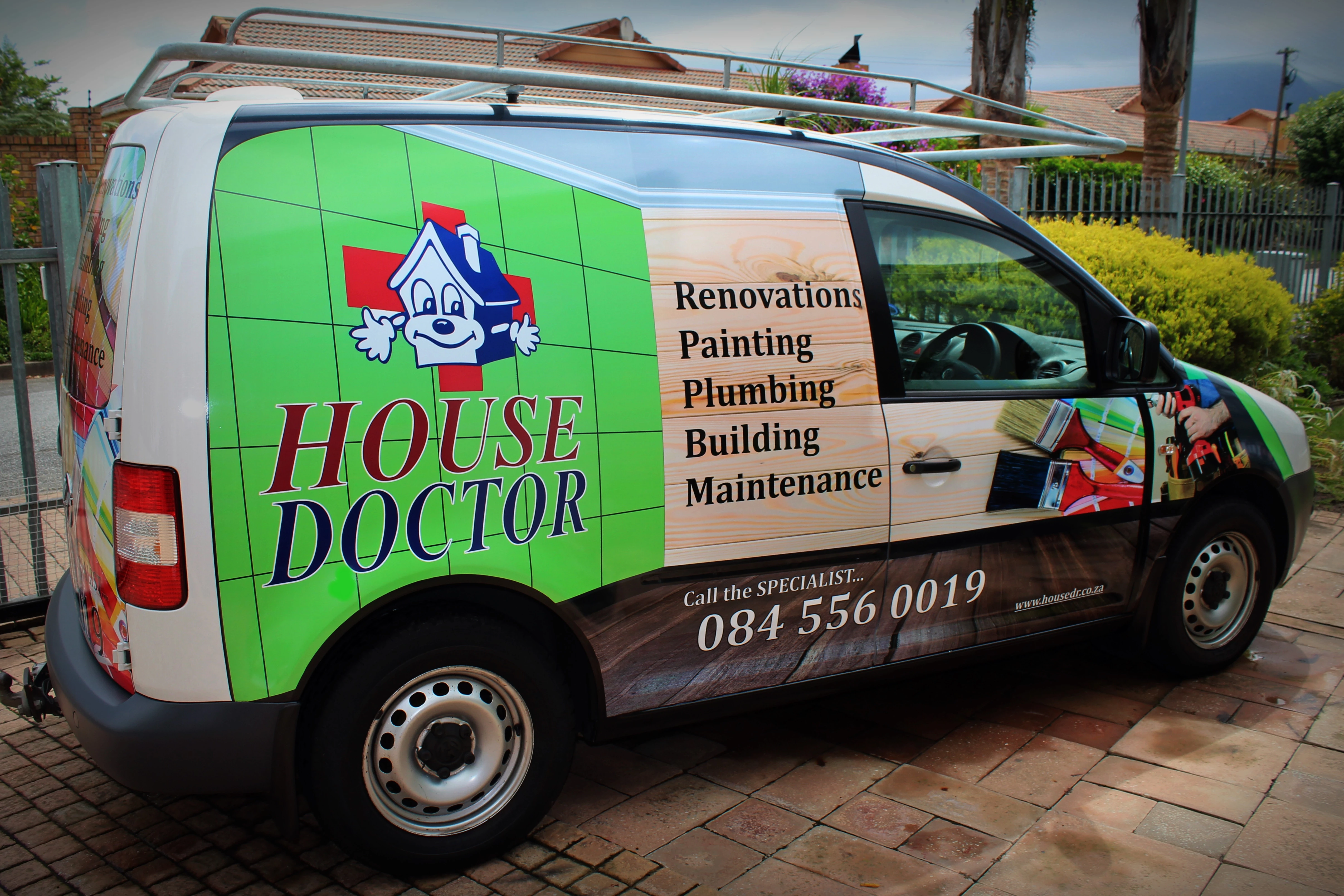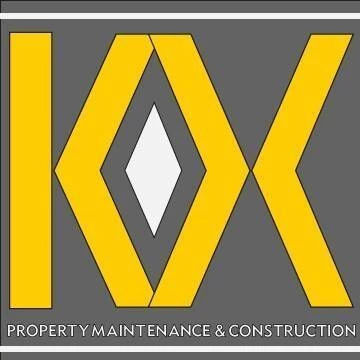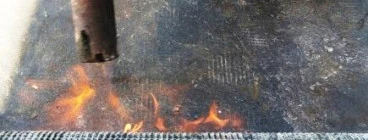- Stellenbosch CBD, Western Cape
- Business can travel to you
- Awards: #7 Most Popular in Hermanus for 2024
Building & Construction Specialists in Hermanus
Overberg District, Western Cape
Best match results for building & construction specialists in Hermanus + 5km.
Deckspertz " The expert solution" With over 30 years of expertise in the industry, Deckspertz is a leading provider of high-quality decking and outdoor timber structures. Our company is built on a passion for craftsmanship, a commitment to sustainability, and a dedication to exceeding customer expectations. Whether you're looking to transform your backyard into a stunning outdoor retreat or enhance the functionality of a commercial space, we have the experience, skills, and materials to bring... Read more
Transform Your Property with Our Expert Services! Located in the beautiful Bettys Bay, we offer top-notch services to enhance and secure your home or business. Our services include: Fencing: Diamond Mesh Clearview Fencing Roughcut Timber Fence Latte Fence Gates: Sliding Pedestrian Farmstyle Decking: Wood Composite We also specialize in installing: Gate Motors Intercom Systems Security Cameras Trust us to provide quality craftsmanship and exceptional service. Contact... Read more
IDP Building, Demolition and Renovations is a family run company that is located in Somerset West in the Western Cape. The company has been in operation since 2004. IDP Contracting offers a wide range of demolition building and renovation services using cost and time effective strategies to ensure that your project whether commercial, industrial or residential, goes as smoothly as possible. All our contractors are dedicated to customer service, demolition and renovation excellence. At IDP... Read more
CPT Aluminium specialises in design, supply and installation of Aluminium Doors and Aluminium Windows in the Residential area of Cape Town, South Africa. We manufacture as per AAAMSA regulation standard which allows us to offer our clients the best solution and value for their investment. * Aluminium Doors: Single doors, Double doors, Sliding Doors, Stacking Folding, Vista Doors or Bi-Fold doors: Versatile and can be used in a domestic or in a commercial building or office. The customisation... Read more
ARCHITECTURE & CONSTRUCTION As a member of South African Council for the Architectural Profession & The NHBRC, we are constantly updating our professional development and knowledge base tin line with the latest in design and environmental trends, ensuring compliance with the latest regulations and environmental, energy efficient trends. BUILDING PLANS: Residential House Plans - New & Home Additions Municipal Submissions & tracking 3-D RENDERING CONSTRUCTION: New builds Major Additions... Read more
Free Detailed Bathroom Renovation and Assesment followed by a Detailed Quotation
Validity: from 27 Jan 2022 to 31 Dec 2029
Visit our website today and complete the "Request a Quote Form" and we will call you back. We will create a unique, fresh and modern design for your bathroom. If you opt for the "Full-Turnkey" option, and after you have accepted our detailed labour only quotation, we then go into overdrive to assist you our valued client to source any and all your products, by making use of the four main Bathroom Products Supply Companies, namely: TILE AFRICA, CTM, ITALTILE and BATHROOM BIZARRE. Contact us today for a superior Bathroom Renovation experience, expertly excecuted by a World Class outfit of Tradesman. Thank you in advance for your support and yes, Let's Make Your Dream Come True! DE WITT BATHROOMS
CIVIL CONSTRUCTION Large amount of Civil Construction projects has been done by ALMAR Civils in the few years. We cater for small and large projects and deliver work of the highest quality and guaranteed customer satisfaction. Our team work fast and efficient for a quick turnaround time. TARRING – TAR PAVING ALMAR Civils does a variety of Tar work from tarring of driveways, pavements and walkways as well as larger projects like Tar Surfacing parking areas and private roads. We also do the... Read more
We do renovations, extensions and alterations to existing homes and buildings. Our ideas and solutions are cost efficient and undertaken with minimal disruption to your daily routine. We build new residential homes of exceptional quality. We pride ourselves in our attention to each clients specific needs. We provide construction and project management services for residential property developments. Our expert team ensures the efficient completion of projects to a superior quality. NEW BUILDS We... Read more
Holmes Waterproofing is a small local business with years of experience in the painting and waterproofing industry. At Holmes Waterproofing we use roof repair systems in Cape Town that fixes flat roofs, tiled roofs, and metal roofs. We fix roof leaks on your roof pitch with our waterproofing services in and around the Western Cape, Cape Town. We are proudly situated in Somerset West and service the entire area, including Betty's Bay, Kleinmond, Helderberg, Paarl, Franschhoek, Strand, Hermanus,... Read more
Your local specialists in: Construction | Property Development | Property Maintenance. With over 10 years experience in the industry, seeing to all your home improvement and care needs remains our top priority. Building By Nature. Read more
Donnelly Tool Hire is an independent tool hire and hardware business in Unit 5 Wederpark, Bergsig Road, Sandbaai, Hermanus Business hours: Monday to Friday 07.00 17.00 Saturday 08.00 14.00 We hire a wide variety of top quality tools and building equipment for hire at competitive prices. Our hire stock equipment brands include - Honda, Makita, Bosch, Karcher, Stihl and Husquarvana. Our hire tool includes the following but we are constantly adding new equipment to our inventory: Access... Read more
Rika Products (Pty) Ltd is the exclusive manufacturer and national distributor of the Rika Block. What is the Rika Block? The Rika Block is a pre-cast EPS concrete foundation system for timber and composite structures eg; decking, pod homes, container homes, cabins, water tank platforms, etc. The cleverly engineered block is designed to support 38mm and 50mm timber and a 95x95 post support in the center for the elevated decks. Weighing in at 15kg's per unit the Rika Block can support 500Kg's... Read more
The Practice is a registered member of The South African Council for the Architectural Profession and an incorporated member of the South African Institute of Architects We provide a personal Architectural Service that is reliable, affordable and efficient, covering a broad spectrum of building We answer the needs of our clients through an inclusive and hands-on process Read more
At AK Garage Doors: Customer satisfaction is guaranteed. We provide the following services: 1) Manufacture Wooden, Fibreglass & Aluminium Sectional Doors. Steel Roll-up doors. 2) Driveway Gates 3) Installation of garage doors with/without automation. 4) Service and Repairs to all domestic garage doors and motors. 5) Service and repairs to driveway gate motors. 6) Gate motor installation. 7) Industrial Roller shutter doors Areas: All areas in and around KZN Durban - Berea, Glenwood,... Read more
Wricon (PTY) Ltd is a residential construction company specialising in: * Alterations & Additions * New builds * 15+ years individual experience within different sectors of the construction industry * Registered with the NHBRC and BIBC Read more
We at CDH Construction aim to address and impress on all. From a new build to, renovating an existing structure, we will ensure that they are all seen to efficiently along with any additional associated remedial work. As an independent project management and development company, CDH Construction (Pty) Ltd. provides its expertise in both a residential and commercial capacity while, at all material times, ensuring adherence to both respectable and quality service delivery. Read more
- Hermanus CBD, Western Cape
- Business can travel to you
- Awards: #24 Most Popular in Hermanus for 2020
WHITE LINE INTERIORS is an interior architectural design consultancy, based in Hermanus, specialising in bespoke design solutions for the interior industry, including decor styling, space planning and technical detailing. We offer a full turnkey service, from conceptual design right through to management of installations and successful completion. WHITE LINE INTERIORS can custom design and manufacture furniture locally, as well as provide an overall procurement service. Read more
- Hermanus CBD, Western Cape
- Business can travel to you
Painting, Plumbing, Renovations, Additions, General maintenance, Project Management Read more
- Main Road, Hermanus CBD 8001, Western Cape
- Business can travel to you
Welcome to Cape Insulation. We only supply and fit Cellulose Fibre Insulation because it has proven to be the most effective and affordable insulation for your building. Cellulose Fibre is a natural insulation material that creates a much tighter fitting insulation then old blanket type insulation. Have a more ambient temperate home, cooler in summer and warmer in winter. Cellulose is also a great Acoustic insulation. A well insulated home will save on electricity, gas or wood. Call today for a free... Read more
New air conditioning installations and repairs. Repairs to cold and freezer rooms. Electrical repairs and issue of Certificate of Compliance on dwelling. Qualified Technician and Electrician. Started in Telkom SA in 1979. Did new installations at various exchanges in the whole Transvaal area. Had the Government contract for 18 years in Mpumalanga at Dept. of Health. Did there Large air conditioning, cold/freezer rooms, mortuary cabinets, split type air conditioners and upgraded there theatre air... Read more
K3 Constructions and General Suppliers was established in 2017 with the focus being to offer high-quality services to its customers. We strive to deliver our services to the best of our abilities. In K3 Constructions and General Suppliers, we believe that we can make our world a better place whether economically or socially. This is the reason we are the utmostly dedicated to giving our customers the best service we are can. K3 Constructions and General Suppliers are split into two sections,... Read more
Construction & Building of new residential or industrial buildings. Renovations, tiling, painting, Concrete work, 15 years experience, NHBRC Registered. Free consultation, Free Quotation and advice. Projects Management. In the whole of the Overstrand area Read more
KONSTRUKTAFIX is a Hermanus based, full service property maintenance & construction company. We provide property maintenance, development & construction services to customers in a range of different industries and property types. Whether it’s getting your home remodeled or fixing damage that’s been done to your home, we’re here to help you every step of the way. KONSTRUKTAFIX has a combined 30 years experience to give you results and piece of mind. YOUR SATISFACTION IS IMPORTANT TO US! WE... Read more
Manufacturers of Simulated stone Products Cobbles for driveways and walkways Pavers slabs Tiles indoor and outdoor Cladding for walls Pool Copings Landscaping Products Grassblocks Read more
Our maintenance and construction company is a family run building contractor. Most of our work comes via recommendations and word-of-mouth from our existing customers and we pride ourselves on being a reliable and highly reputable local business. Nick has 30 years’ experience in all aspects of the construction industry and our scope of expertise includes: • Extensions • Refurbishments and renovations • Garage and loft conversions • Tiling • Roofing • Bespoke kitchens and bathrooms • Decorating... Read more
Waterproofing your home or business premises is critical to securing your assets. And, being a significant investment, you want to ensure it is done correctly the first time. It may seem like a large cost, but you are sure to save in the long term. We at Hermanus Torch On Waterproofing have over 20 years experience in the building and renovation industry, during which time we have successfully solved a variety of problems involving leaking, seepage, dampness and water damage in roofs and walls. Read more
- Hermanus, Hermanus CBD 7200, Western Cape
- Business can travel to you
- Awards: #21 Most Popular in Hermanus for 2022
We supply and install tubular skylights for all types of roofs. We also supply and install extractor fans. We specialise in Roof coatings, High pressure cleaning, Waterproofing Roof painting airless spray application. Waterproofing and custom flashings made for lifetime waterproofing solution. We specialise in Roof coatings, High pressure cleaning, Waterproofing We also supply and install tubular skylights and extractor fans. Roof painting airless spray application. Waterproofing and... Read more
Lighthouse Construction prides itself in the development / construction of: Residential homes, residential estates, commercial and light industrial developments as well the development of vacant land. The company has positioned itself as a "one-stop" organisation offering all the necessary services and aid throughout the construction project. Read more
- Hermanus CBD, Western Cape
- Business can travel to you
Master Tiler, walls and floors. I build walls from foundation to brick laying to plastering. Bathroom renovations and basic plumbing. Roof repairs and maintenance and painting. General painting. I also do ceilingsAre you planning on renovating your home, business premises or start new project. We would like to be part of your journey on a successful building project. Hi quality and finish. NHBRC standards and budget approval. SURVIVES PROVIDED Project Management Construction to detail Performance... Read more















































































